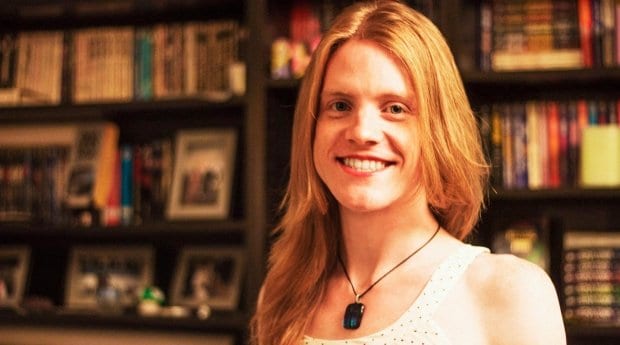The International Trans Day of Remembrance (TDoR) is upon us — a day set aside to memorialize those who have been killed in the past year as victims of anti-transgender hatred or prejudice, in Canada and worldwide.
Rita Hester, a trans woman, was murdered on Nov 28, 1998; her death inspired vigils around the world, which evolved into the TDoR we know today. Toronto’s TDoR observances customarily happen on or around Nov 20.
As in years past, an evening ceremony is planned for the main ballroom at the 519 Church Street Community Centre, on Thursday, Nov 20 from 7 to 9pm. The first TDoR at The 519, in 2003, was a small group affair. Since then, annual attendance has steadily grown — last year, it was standing room only.
“It shows the momentum this event has had,” says Susan Gapka, local trans activist and leader of the Trans Lobby Group. But Gapka sees this growth as bittersweet. “It’s unfortunate that it does have to grow, because it’s not a day of celebration; it’s a day of memorial for people who are still being murdered around the world.”
We both go each year to pay our respects, but the truth is, TDoR isn’t really about people like Susan and me — at least, not primarily.
As a trans person, I’m more likely to fall victim to harassment, violence, assault or murder than a similarly situated cis person. But I’m also aware that it’s unlikely to happen to me. How much more at-risk would I be if I were black? If I were poor? If I were disabled? If any of these other dimensions of identity intersected with my transness, the dangers to me in this world would be far, far greater.
The TDoR memorial list, which compiles the names and photos of trans people murdered each year, reveals a disturbing yet unmistakeable trend: the overwhelming majority of victims are trans women of colour.
For trans people of colour, racism intersects with their experiences of transphobia in a way that amplifies their marginalization and multiplies their risk of being targeted for violence and hate. Statistics confirm this: a 2011 report from the National Coalition of Anti-Violence Programs found that of all hate-murder victims (in the United States), 87 percent were people of colour; 45 percent were trans women of colour.
If there’s one thing the TDoR list proves, it’s where our focus needs to be if we’re really aiming to support trans people. We need to start with concerning ourselves about the most marginalized people in our community. We need to do the necessary work, and self-education, to build those principles of anti-racism and anti-oppression into the very foundation of our organizing — rather than spending all our time and money arguing about flags and marches, then treating intersectionality as an afterthought.
Trans people exist across the entire spectrum of race, ability and class. If your trans group’s membership seems primarily white or if it seems to consist mostly of people with jobs, homes and families, take note of that. Consider why that might be. Was that your deliberate intention? Many groups launch with mission statements to “represent a wide spectrum of trans people” or “campaign on social issues affecting the trans community” but end up serving only the needs of members with greater privilege.
I’ve noticed the TDoR ceremony at The 519, by contrast, tends to prioritize people of colour as their speakers and performers. I feel that’s an example that trans groups, organizing committees and Pride organizations would do well to follow. To fight effectively, we must fight for everyone. And that means making the necessary effort to include everyone. Not just talking about it; doing it. Any less is not enough.
Christin Scarlett Milloy is a Toronto writer and human rights activist.
Follow her on Twitter @chrinfinity.

 Why you can trust Xtra
Why you can trust Xtra


